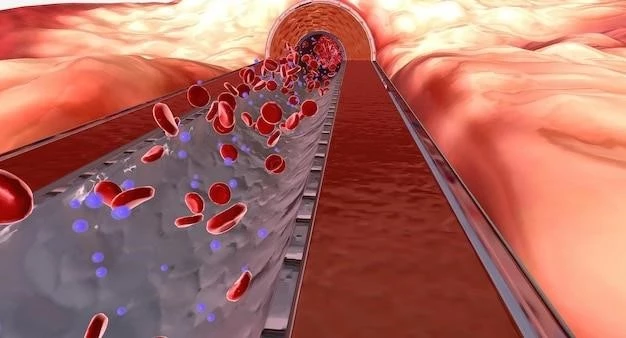Introduction
Müllerian duct abnormalities (MDAs) and galactosemia are separate conditions with unique characteristics, yet evidence suggests a potential link between the two disorders.
Definition of Müllerian Duct Abnormalities and Galactosemia
Müllerian duct abnormalities (MDAs) refer to congenital defects affecting the development of the Müllerian ducts, which give rise to female reproductive organs. Galactosemia is a genetic disorder disrupting the body’s ability to metabolize galactose, a sugar found in dairy products.
MDAs can manifest in various anomalies such as uterine malformations, while galactosemia can lead to a range of symptoms due to the accumulation of galactose in the body. The co-occurrence of these conditions has been documented in medical literature, suggesting a potential association between the two.
Müllerian Duct Abnormalities
Müllerian duct abnormalities (MDAs) are a spectrum of congenital defects affecting the development of the female reproductive tract.
MDAs arise due to abnormalities in the Müllerian ducts, which give rise to structures like the fallopian tubes, uterus, and vagina.
These anomalies can result in a range of reproductive health issues and may require medical intervention based on the specific abnormality.
Development of Müllerian Ducts
The Müllerian ducts, also known as paramesonephric ducts, play a crucial role in the development of the female reproductive system, giving rise to structures such as the fallopian tubes, uterus, and vagina. These ducts typically begin to form early in fetal development and undergo a complex series of transformations to create the anatomical features essential for female reproductive function.
Disruptions or abnormalities in the developmental process of the Müllerian ducts can lead to a spectrum of Müllerian duct abnormalities (MDAs), resulting in various structural defects within the reproductive tract. Understanding the intricate development of these ducts is fundamental in comprehending the etiology and manifestations of Müllerian duct anomalies.
Müllerian duct anomalies encompass a spectrum of structural abnormalities affecting the female reproductive tract. These anomalies can include but are not limited to uterine malformations, vaginal duplications, and fallopian tube abnormalities. Each type of anomaly may present distinct challenges and implications for reproductive health.
Understanding the diverse range of Müllerian duct anomalies is crucial for accurate diagnosis and appropriate management strategies tailored to the specific anomaly identified in an individual. Treatment approaches may vary depending on the type and severity of the anomaly, highlighting the importance of proper classification and characterization of these anomalies.
Types of Müllerian Duct Anomalies
Müllerian duct anomalies (MDAs) encompass various structural defects affecting the female reproductive tract. These anomalies include uterine malformations, vaginal duplications, fallopian tube abnormalities, and other developmental issues. Each type of anomaly presents unique challenges and may impact reproductive health differently, requiring individualized treatment strategies.
Understanding the distinct types of Müllerian duct anomalies is essential for accurate diagnosis and effective management tailored to the specific anomaly identified in each case. Proper classification of these anomalies is crucial for providing appropriate care and addressing the associated reproductive complications effectively.
Galactosemia
Galactosemia is a genetic disorder that impairs the body’s ability to metabolize galactose, a sugar present in dairy products. This condition can lead to various symptoms and complications related to galactose accumulation in the body.
Overview of Galactosemia
Galactosemia is a rare genetic disorder characterized by the body’s inability to metabolize galactose, a simple sugar found in dairy products. This condition can lead to severe complications if not managed properly, affecting various organs and bodily functions due to the toxic buildup of galactose in tissues.
Individuals with galactosemia must adhere to a strict diet devoid of galactose-containing foods to prevent adverse effects on their health. Proper management and early diagnosis are crucial in minimizing the potential complications associated with this metabolic disorder.
Genetic Basis of Galactosemia
Galactosemia is primarily caused by inherited genetic mutations affecting enzymes involved in the breakdown of galactose. Specifically, mutations in genes such as GALT, GALE, and GALK1 disrupt galactose metabolism, leading to the accumulation of toxic byproducts.
Individuals with galactosemia inherit these genetic mutations, impacting their ability to process galactose efficiently. Understanding the genetic basis of this disorder is essential for appropriate diagnosis, management, and genetic counseling to prevent complications associated with galactosemia.
Symptoms and Complications of Galactosemia
Galactosemia can present with various symptoms including jaundice, poor feeding, lethargy, and developmental delays in affected individuals. Long-term complications may involve liver damage, cognitive impairments, cataracts, and reproductive issues. Early detection and dietary management are essential in preventing severe complications associated with galactosemia.

Relationship Between Müllerian Duct Abnormalities and Galactosemia
Both Müllerian duct abnormalities (MDAs) and galactosemia are distinct conditions, but emerging evidence suggests a potential association between the two disorders.
Evidence of Association
Research has shown rare occurrences of familial aggregates with Müllerian fusion anomalies (MFAs) and Müllerian aplasia (MA), suggesting a potential genetic link between Müllerian duct abnormalities and other congenital defects. Additionally, reported cases have hinted at a possible association between errors in galactose metabolism and Müllerian aplasia, indicating a need for further investigation into the relationship between galactosemia and Müllerian duct abnormalities.
Possible Mechanisms Linking the Two Conditions
The potential mechanisms linking Müllerian duct abnormalities and galactosemia remain under investigation. One hypothesis suggests a shared genetic predisposition that could influence the development of both conditions. Additionally, metabolic disturbances resulting from galactosemia may impact the embryonic development of the female reproductive system, leading to Müllerian duct anomalies. Further research is needed to elucidate the complex interplay between these two disorders.
Case Studies and Research
In a noteworthy case study, familial aggregates of Müllerian fusion anomalies and Müllerian aplasia hinted at potential genetic links. Further investigations are underway to explore the interplay between these anomalies and galactosemia.
Reported Cases of Müllerian Duct Abnormalities and Galactosemia
Case reports have highlighted familial aggregates with Müllerian fusion anomalies (MFAs), Müllerian aplasia (MA), and a potential link to galactosemia, indicating the need for further investigation.
Research Findings on the Co-occurrence of the Conditions
Studies have documented rare cases of familial clusters involving Müllerian fusion anomalies (MFAs) and Müllerian aplasia (MA), indicating a possible genetic connection. Further exploration is needed to understand the relationship between galactosemia and Müllerian duct abnormalities.

Diagnosis and Management
Diagnostic approaches for Müllerian duct abnormalities and galactosemia involve genetic testing, imaging studies, and clinical evaluation; Treatment options include surgical interventions, dietary modifications, and reproductive counseling tailored to the individual’s specific condition.
Diagnostic Approaches for Müllerian Duct Abnormalities and Galactosemia
Diagnosing Müllerian duct abnormalities and galactosemia typically involves a combination of genetic testing, imaging studies such as ultrasound and MRI, hormone level assessments, and clinical evaluation of symptoms. Identification of specific genetic mutations related to both conditions can aid in accurate diagnosis. Management strategies may include surgical interventions for Müllerian duct abnormalities and dietary modifications to manage galactosemia effectively.
Treatment Options and Therapeutic Strategies
Treatment approaches for Müllerian duct abnormalities and galactosemia may involve a combination of surgical interventions to address structural defects, dietary modifications to manage galactosemia, and reproductive counseling to navigate potential fertility issues. Tailored therapeutic strategies aim to address the specific needs of individuals with these complex conditions.
Prevention and Genetic Counseling
Elucidating potential genetic links and implementing genetic counseling can aid in managing the risks of Müllerian duct abnormalities and galactosemia. Preventive measures and informed decision-making play pivotal roles in addressing these conditions.
Preventive Measures for Müllerian Duct Abnormalities and Galactosemia
Early diagnosis through genetic testing, prenatal screening, and counseling can help in identifying Müllerian duct abnormalities and galactosemia. Optimal management strategies, including lifestyle modifications and therapeutic interventions, play a crucial role in minimizing the impact of these conditions on overall health.
Role of Genetic Counseling in Managing the Conditions
Genetic counseling plays a crucial role in managing Müllerian duct abnormalities and galactosemia by providing information on inheritance patterns, facilitating risk assessment, and guiding individuals and families in making informed decisions regarding genetic testing, treatment options, and family planning. By understanding the genetic underpinnings of these conditions, individuals can take proactive steps to address potential health risks and optimize their overall well-being.
